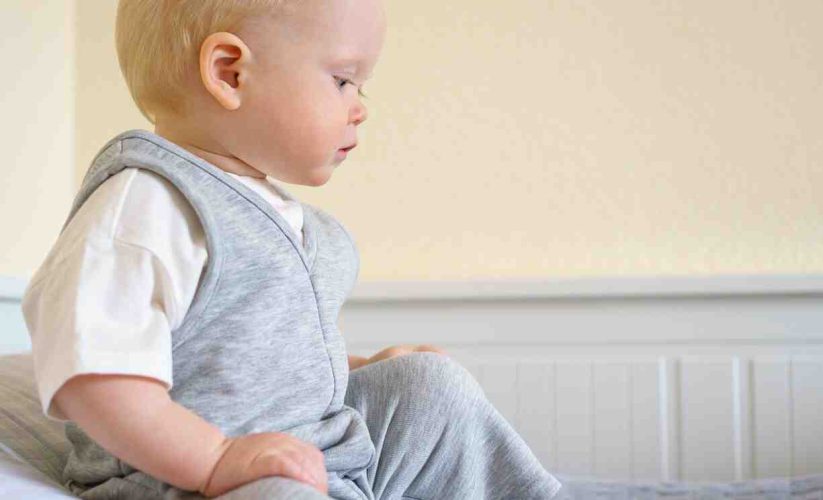
Swaddling and Sleep Training: What You Need to Know
Swaddling and Sleep Training: What You Need to Know
Swaddling and sleep training are two important elements in helping your baby develop healthy sleep habits. While they are often used together, understanding how each works and how they complement each other is essential for creating a solid foundation for your baby’s sleep. In this article, we’ll explore how swaddling and sleep training can work together to help your baby sleep better, the benefits of swaddling, and how to navigate sleep training when the time is right.
What is Swaddling?
Swaddling is the practice of wrapping a newborn baby snugly in a blanket or cloth to provide a sense of security and warmth. This technique mimics the feeling of being in the womb, where babies feel safe and confined. Swaddling helps calm babies by reducing the startle reflex, which is when babies flail their arms or legs involuntarily during sleep. This reflex can wake them up, but when they’re swaddled, they feel more secure and less likely to be disturbed by their movements.
Swaddling can also help regulate your baby’s body temperature and provide comfort, making it easier for them to fall and stay asleep. However, it’s important to do it correctly to avoid potential risks.
Benefits of Swaddling
Swaddling has several benefits, including:
- Promotes Better Sleep: Swaddling can help babies fall asleep more easily and stay asleep longer. By providing a sense of security, swaddling helps babies feel calm and settled, making it easier for them to drift off into a peaceful sleep.
- Reduces the Startle Reflex: The startle reflex, also known as the Moro reflex, is a natural response that babies have when they feel like they’re falling. Swaddling helps contain this reflex by restricting the movement of the arms and legs, which can prevent babies from waking up suddenly.
- Soothes and Comforts: Babies often feel comforted by the feeling of being swaddled, which reminds them of the security of the womb. It can be a great tool for soothing babies who are fussy or having trouble settling down.
- Prevents Scratching: Babies have sharp fingernails, and when swaddled, they are less likely to accidentally scratch themselves or others.
Swaddling Safety Tips
While swaddling can be beneficial, it’s important to practice it safely to reduce the risk of suffocation or hip dysplasia. Here are some safety tips for swaddling:
- Avoid Overheating: Make sure your baby isn’t swaddled too tightly, and check to ensure they’re not getting too hot. Overheating can increase the risk of sudden infant death syndrome (SIDS).
- Leave Room for Hips: When swaddling, make sure there’s enough room for your baby’s hips and legs to move freely. Tight swaddling around the hips can lead to hip dysplasia.
- Use a Safe Swaddling Technique: Always leave enough space for your baby’s chest and face to be exposed. Don’t cover their head or face with the swaddle, as this can obstruct airflow.
- Stop Swaddling Once Your Baby Can Roll Over: Once your baby shows signs of rolling over (usually around 2-4 months), stop swaddling. Swaddling can increase the risk of suffocation if the baby rolls onto their stomach while swaddled.
What is Sleep Training?
Sleep training is the process of teaching your baby to fall asleep on their own and develop healthy sleep habits. The goal of sleep training is to help babies learn how to self-soothe, fall asleep independently, and stay asleep for longer periods. Sleep training doesn’t mean letting your baby cry it out (although some methods do involve some crying). There are various methods of sleep training, and it’s important to choose the one that feels right for both you and your baby.
Common Sleep Training Methods
- Ferber Method (Graduated Crying): This method involves letting your baby cry for progressively longer intervals while offering reassurance in between. It encourages babies to learn to self-soothe and fall asleep independently.
- Chair Method: With this method, you gradually move further away from your baby’s crib each night until they can fall asleep on their own. It’s a gentler approach that allows your baby to adjust gradually.
- No Tears Method: This method focuses on comforting your baby without letting them cry. You may pick them up and soothe them until they are calm, but the goal is for them to eventually learn to fall asleep independently.
- Pick Up/Put Down Method: In this method, you pick up your baby when they cry and comfort them until they are calm, then put them back in the crib when they are sleepy but not fully asleep. The idea is to help your baby learn how to fall asleep without needing to be held.
How Swaddling and Sleep Training Work Together
Swaddling and sleep training can complement each other in several ways, but it’s important to understand how to use them together effectively.
- Swaddling Provides Security During Sleep Training: Swaddling can offer your baby a sense of comfort and security during sleep training, especially in the early stages. While sleep training focuses on helping babies learn to fall asleep on their own, swaddling can help them feel calm and settled while they adjust to new sleep routines.
- Swaddling Can Help Your Baby Self-Soothe: One of the goals of sleep training is to teach your baby to self-soothe, and swaddling can support this process. By reducing the startle reflex and providing a secure environment, swaddling can make it easier for your baby to stay calm and fall asleep without the need for constant assistance.
- Gradual Transition: If your baby is used to being swaddled, you may want to consider gradually transitioning them out of the swaddle as part of their sleep training. Some babies may find it difficult to sleep without the swaddle, but with time, they can learn to self-soothe without the extra security. You can start by swaddling with one arm out, then slowly stop swaddling altogether.
- Swaddle in the Early Stages: Swaddling is most effective in the early months of life (0-2 months) when babies are still adjusting to the world outside the womb. As your baby grows, you can slowly phase out swaddling and introduce other sleep training techniques.
When to Start Sleep Training
The right time to start sleep training depends on your baby’s development and temperament. Generally, most babies are ready to start sleep training around 4-6 months of age, but it’s important to look for signs that your baby is ready:
- They are consistently sleeping for longer stretches.
- They are able to self-soothe (e.g., sucking on their thumb or gently rubbing their face).
- They are reaching appropriate developmental milestones (e.g., no longer needing nighttime feedings or assistance to fall asleep).
It’s always a good idea to consult with your pediatrician before starting sleep training to ensure your baby is ready.
Conclusion
Swaddling and sleep training can work hand in hand to help your baby develop healthy sleep habits. Swaddling provides a sense of security and comfort, which can help your baby fall asleep more easily and stay asleep longer. Once your baby is ready for sleep training, you can gradually transition from swaddling to encouraging self-soothing and independent sleep. It’s important to find a balance that works for both you and your baby, and always prioritize safety while using swaddling or sleep training techniques. By using both swaddling and sleep training, you’ll be well on your way to helping your baby sleep soundly and establish good sleep patterns for the long term.


